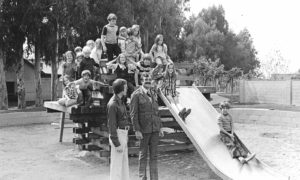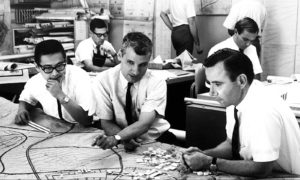The Master Plan that created the City of Irvine began with what is arguably the most lopsided real estate deal in California history.
In 1960, Irvine Company sold 1,000 acres of ranchland to the University of California with a visionary concept to surround it with a modern “city of intellect,” unlike any in America.
The sale price? One dollar.
 Five years later, in the fall of 1965, students made their way to the first-ever classes at UC Irvine. As the inaugural quarter got underway, so did work on a community of new homes, parks, paths and shops that would create the first of Irvine’s 24 villages — and America’s preeminent master-planned city. Since then, the Master Plan has guided the city’s growth. It helped preserve one-third of the city’s land as open space. It created modern business centers to ensure high employment with high-wage jobs. And it fostered a community spirit that helped Irvine become known as “America’s Safest City.”
Five years later, in the fall of 1965, students made their way to the first-ever classes at UC Irvine. As the inaugural quarter got underway, so did work on a community of new homes, parks, paths and shops that would create the first of Irvine’s 24 villages — and America’s preeminent master-planned city. Since then, the Master Plan has guided the city’s growth. It helped preserve one-third of the city’s land as open space. It created modern business centers to ensure high employment with high-wage jobs. And it fostered a community spirit that helped Irvine become known as “America’s Safest City.”
Today, Irvine ranks among the nation’s most successful, desirable and greenest cities. And it remains a city of intellect, where 90 percent of high school graduates attend college, and where UC Irvine ranks as the 9th best public university in the land, according to U.S. News & World Report.
The experiment that began in 1960 has grown into one of America’s most livable cities. In addition, more than one-third of all Fortune 500 companies include offices in Irvine. How did all this come to pass?
Stopping ‘Oozing Molasses’ in its Tracks
In the late 1950s, LA County’s unbridled growth began to spread south like “oozing of molasses,” as the late Ray Watson, Irvine Company’s first architect, called it.
In its path lay the 93,000-acre Irvine Ranch, which stretched from the Pacific Ocean to the Cleveland National Forest, encompassing one of the rarest ecosystems in the world.
According to Watson, Irvine Company faced “overwhelming” pressure to subdivide — to satisfy demand for new homes. But the company resisted. It had another idea.
What If?
What if we master-planned the entire 93,000-acre ranch? That’s what company planners asked in
the late 1950s. No one had ever dared such an experiment, but they proposed an entire city of villages — each with parks, schools and shopping — connected with walking and bike paths and leading to natural wildlands. They wrote all of these ideas into a document they called the Master Plan. And that set into motion the City of Irvine — created with $1 and a vision.









